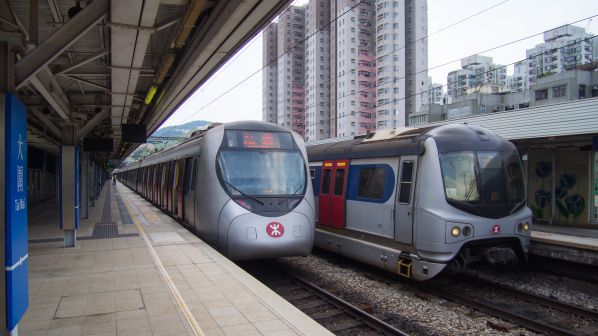HONG Kong metro operator MTR has announced that commissioning of a new signalling system on the East Rail Line (EAL), as part of the Shatin to Central Link (SCL) project, will take place on February 6, coinciding with the start of operation of nine-car trains on the network.
The announcement coincides with the release of a report on February 1 into technical issues with the signalling system, which found that an issue identified in May had caused the postponement of the commissioning of the signalling system on September 11 last year, a day before the signalling system was due to enter service.
The signalling issue identified in May could have potentially caused a train to follow the train in front, potentially resulting in the train following the wrong route. The glitch occurred when a new software link between the two internal Automatic Train Supervision (ATS) modules, built specifically for MTR to provide extra train fault status monitoring to the traffic controller, overloaded the Train Monitoring Tracking (TMT) data processing capacity. While safety subsystems would have prevented accidents from occurring, the glitch would have caused disruptions to passengers.
The investigation panel, chaired by engineer Mr Edmund Leung Kwong-ho, found MTR was not sensitive enough to the potential impact on services and did not secure a more detailed analysis of what went wrong from Siemens, which was awarded a $HK 850m ($US 109.7m) contract in December 2012 to upgrade EAL signalling.
“The software issue had been discovered and reported by Siemens, the contractor, as a defect that required remedial measures, but it had not been deemed to be a Safe and Sound (S&S) issue by the MTR team responsible for the project,” the report says. “Train deviations due to this software issue were only observed during analysis of logfiles during testing and simulation and did not actually occur in real operation on that day.”
Siemens developed a corrective measure for the issue, which was due to be installed alongside an upgrade to the ATS system on September 15 2020, after the launch of the system on September 12 2020. The issue was jointly classified as a “Day 2” item, which was not considered to be critical to the commencement of service.
“It appears that with the identification of a corrective action, the Siemens and MTRCL teams considered the issue as temporarily ‘resolved’ insofar as a solution had been identified for near-future implementation, and that no further action was therefore required at that stage,” the report says. “This judgement is now known to have been flawed.”
The investigation panel found that Siemens should have provided, and MTR should have requested, a full investigation of the issue including a probability and impact statement which should have then been included in the change request documentation. This would have then initiated the escalation and reporting process.
Siemens resolved the issue by upgrading the software and removing the new bespoke software module.
The commissioning of the signalling system on February 6 follows the completion of all further testing, as well as approvals for the new signalling system and trains from the relevant government departments.
Oversight
MTR has also established a dedicated “SCL Technical and Engineering Assurance Team,” directly accountable to MTR CEO, Dr Jacob Kam, to monitor the SCL project from both a technical and service readiness perspective and to identify important unknown issues of the remaining works of the SCL project for timely reporting and follow up.
A new Service Reliability Report has also been introduced as part of the government’s mechanism to review commissioning of new lines to ensure the timely reporting and handling of issues with a potentially significant reliability impact. The report will complement the existing System Safety Report.
Kam says MTR decided to implement the measures following the experience gained from the postponement and a detailed review of the incident report. MTR also accepts and will implement the other recommendations made in the report:
- providing internal procedures to ensure that relevant government departments are kept adequately informed of all significant reliability issues in the future
- strengthening training to raise sensitivity around public concerns, effective communications and the importance of service quality, reliability and safety, and
- reinforcing second line of defence arrangements on risk management and compliance control to detect and escalate important issues early.
“We never compromise the safety of our passenger services, and also attach great importance to their reliability,” Kam says. “This is also the case for the new signalling system, and it will only be launched when the corporation and the relevant government departments are satisfied with its performance in these aspects.”

